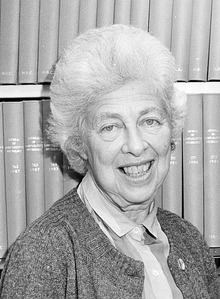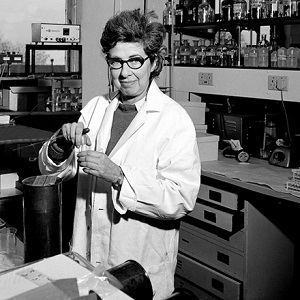Name Brigitte Askonas Role Immunologist | Died January 9, 2013 | |
 | ||
Born April 1, 1923Vienna ( 1923-04-01 ) Institutions John Radcliffe HospitalUniversity of CambridgeHarvard Medical SchoolImperial College LondonMcGill UniversityNational Institute for Medical Research Thesis The separation of enzymes by means of organic solvents at low temperatures: application to aqueous rabbit-muscle extract with a study of creatine-phosphokinase (1952) Notable awards Fellow of the Royal Society (1973)Fellow of the Academy of Medical SciencesRobert Koch Prize (Gold, 2007) | ||
Brigitte Alice "Ita" Askonas, FMedSci FRS (1 April 1923 – 9 January 2013) was a British immunologist. She was elected a Fellow of the Royal Society in 1973, and was a visiting professor at Imperial College London from 1995.
Contents

Education
Vienna-born Askonas studied biochemistry at McGill University (BSc, MSc) and carried out her postgraduate work in the School of Biochemistry at the University of Cambridge (PhD). Her role models in the department included two distinguished scientists, Margaret Stephenson and Dorothy Needham, who were two of the first women to be elected to the Royal Society. She said they taught her that "good science gets recognition regardless of the sex of the scientist". Her PhD supervisor was Malcolm Dixon.
Career
Her first position was at the Allan Memorial Institute of Psychiatry (associated with McGill University). In 1952, she joined the staff of the National Institute for Medical Research where she became the head of the division of Immunology in 1976 (to 1988).
During that time, she worked extensively with fellow immunologist John H. Humphrey to establish the immunology divisions. Askonas focused on B cells and determined their role in producing antibodies as part of the immune response. In 2007 she was made a foreign associate of the United States National Academy of Sciences.
She wrote several biographies of high-profile scientists, including Niels Kaj Jerne, César Milstein and John Herbert Humphrey.
Research
At the NIMR she began researching the biosynthesis of polypeptides in milk proteins discovering that the peptides were synthesised from amino acids rapidly in one piece. From 1955-59 she studied the sites of antibody formation using radioactivity to develop our understanding of antibody molecules and the cells of the immune system. From 1959-61 she studied plasma cell tumors as models for antibody formation. She went on to investigate macrophages and their role in antigen presentation (1962–1968). From 1963-66 she studied the fate of antigen in relation to antibody formation and later continued her study of B cells (1965–1970).
